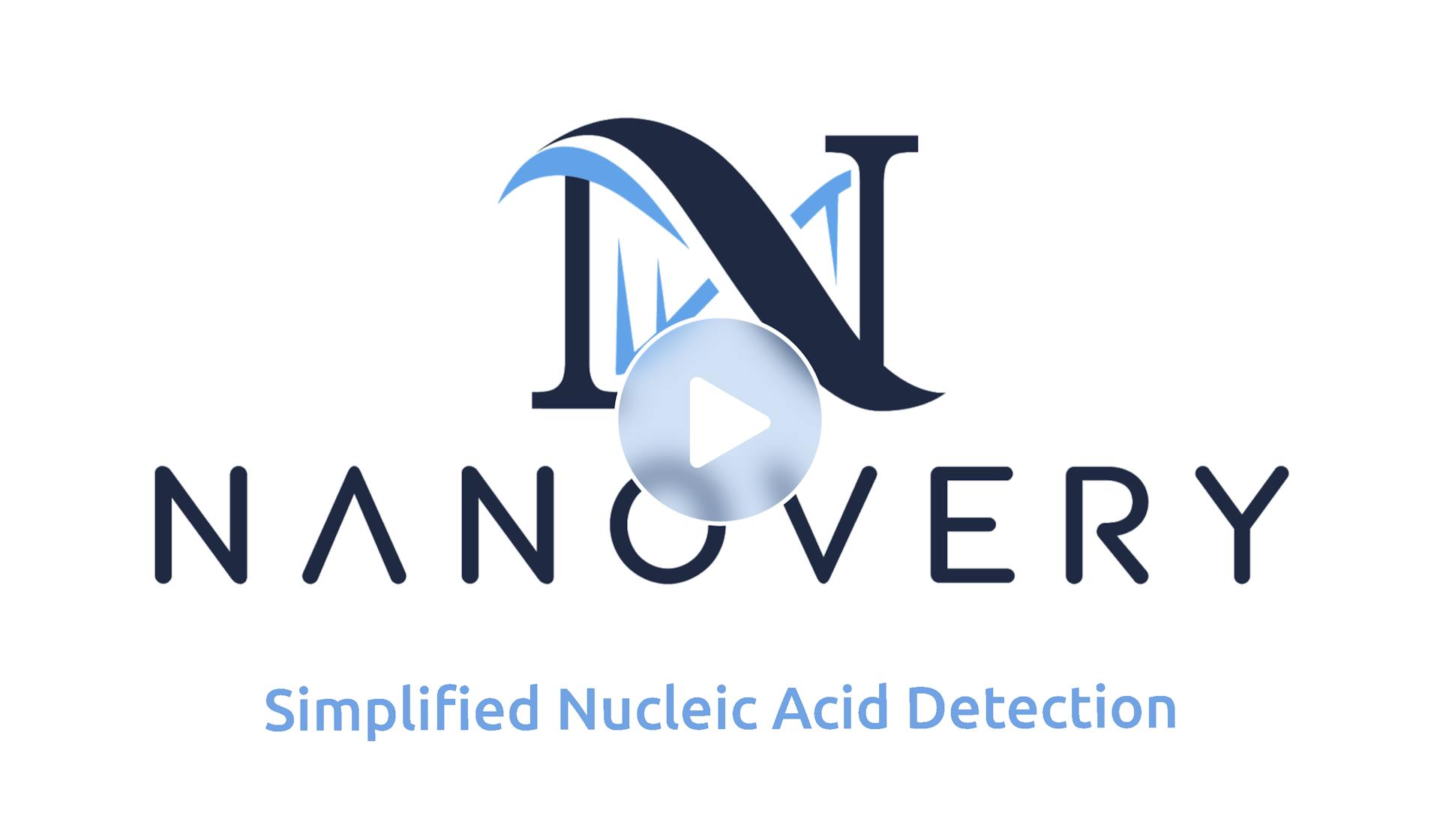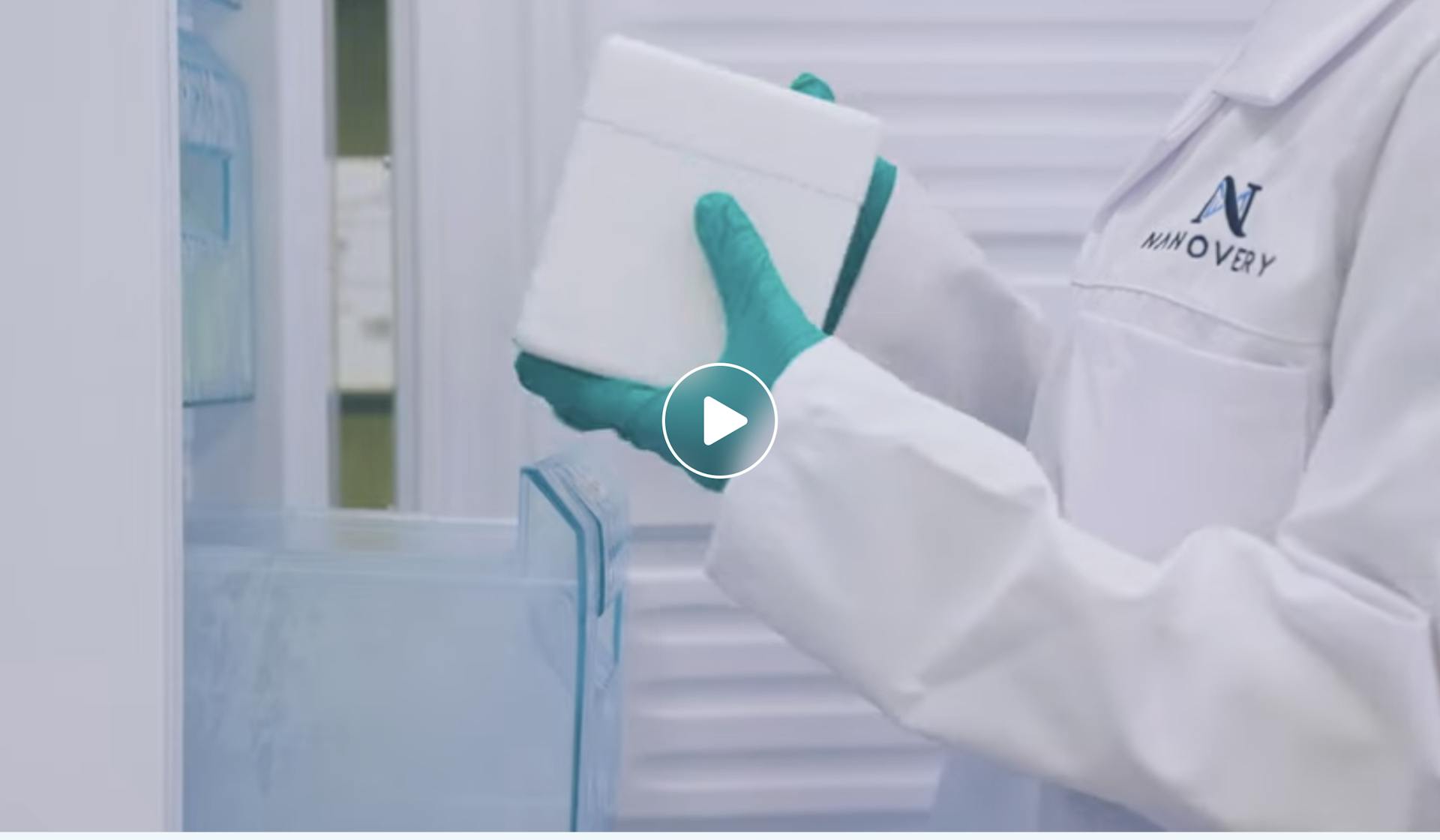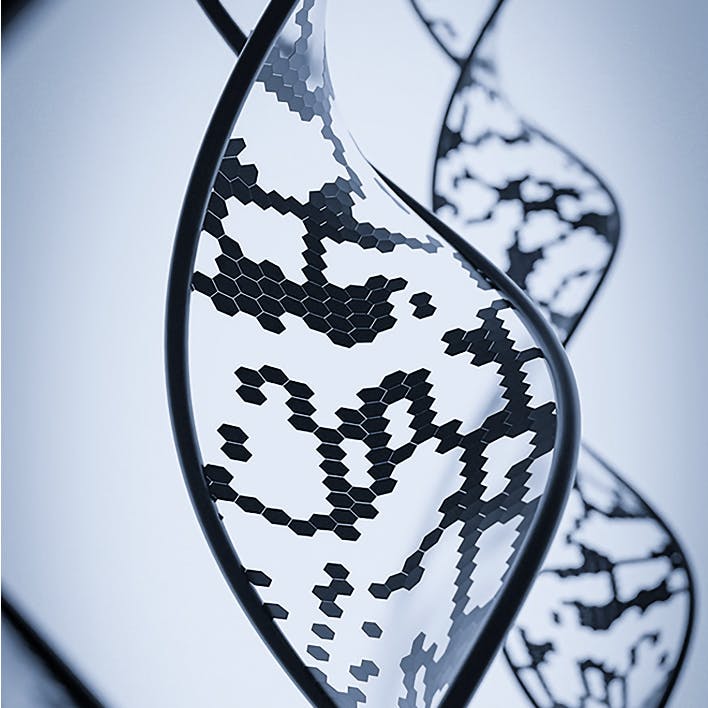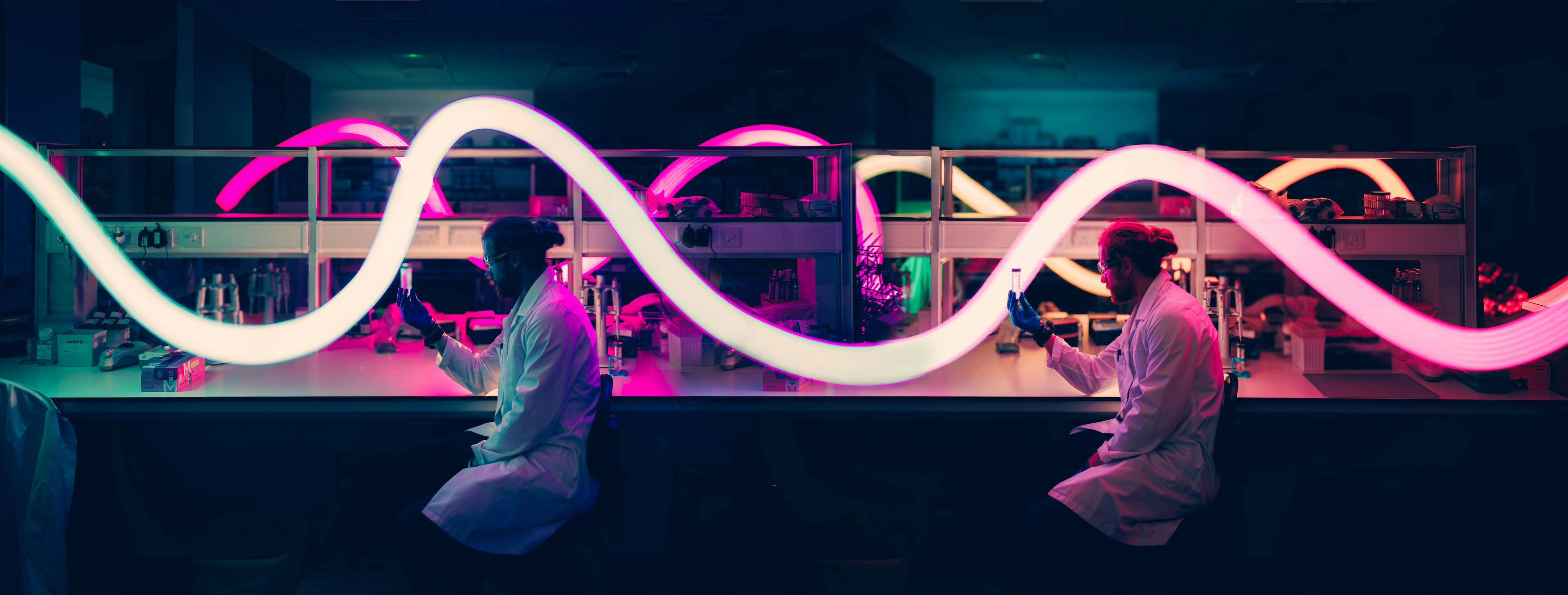
What is our technological approach?
The future of personalised medicine relies on a timely cost-effective way of analysing nucleic acid sequences. Nanovery has created a nanorobot platform that detects therapeutic or diagnostic nucleic acids with a simple and robust workflow.
What is a nanorobot?
Synthetic DNA is excellent for building nanoscale objects because strands may or may not stick to each other through pre-specified base pairing, much like Lego blocks. This led to the creation of the field of DNA nanotechnology and the coining of the term 'DNA nanorobot' in the late 1960s by Ned Seeman.
Nanovery's technology, termed Nucleic Acid Nanorobotics (NANs), are synthetic sequences rationally designed to respond to a specific nucleic acid of interest, producing a quantitative fluorescent signal.
How do Nanovery nanorobots work?
Nucleic Acid Nanorobots (NANs) are tiny machines that operate at the nanometer scale and perform useful functions like signal processing, recognition, and optical response.
NANs are made from synthetic DNA, which makes them soluble and easy to handle.
With NANs, you may use a nucleic sequence as an input, and get sensitive and accurate quantification as an output quickly due to high signal amplification.
Although the technology behind it is complex, the front end is designed to be simple for the benefit of users.

Nanorobot advantages
Maximise Efficiency, Minimise Effort

Sample collection
Our technology works directly in complex media, including blood serum or plasma.

Adding nanorobots
Requiring minimal preparation, our nanorobots will find target DNA or RNA sequences when mixed with your liquid sample.

Fluorescence measurement
Our nanorobots produce a fluorescent signal which provides a direct and absolute concentration of the target biomarker.

High throughput analysis
Our assay is compatible with standard 96-well or 384-well plates and requires minimal hands-on time.
Our solution uses patented enzyme-free amplification
Nucleic Acid Nanorobotics (NANs) offer enzyme-free quantification in complex biological samples, operating efficiently at room temperature and providing a cost-effective, high-throughput technique. The mechanism underlying NANs is dynamic and reversible, ensuring precise selectivity and sensitivity to single nucleotide variations.
This adaptable technology supports assay formats that are highly customisable for a range of applications.
Nanovery's platform can slot into existing instrumentation and relies on minimal sample preparation steps. All that is required is a simple plate reader for a fluorescence read-out that gives direct quantification.
How to use NANs
Prepare Mastermix
Add Mastermix
Plate Samples
Plot Results

Assay Development Services
Though our platform can address any nucleic acid sequence, our current product development focuses on short targets such as antisense oligonucleotides (ASOs), small interfering RNA (siRNA) and microRNAs (miRNAs).
Direct-to-sample quantification in ASO/siRNA concentrations or miRNA expression levels requires a highly sensitive and accurate quantification technique to measure. Nanovery can provide the best tools for your work and remove errors due to extension steps. If you are interested in learning more about our assay development services follow the links below.

Explore Latest Highlights


We are a data-driven company using DNA nanotechnology and AI to scale up testing of nucleic acids for powerful insights from valuable samples.
